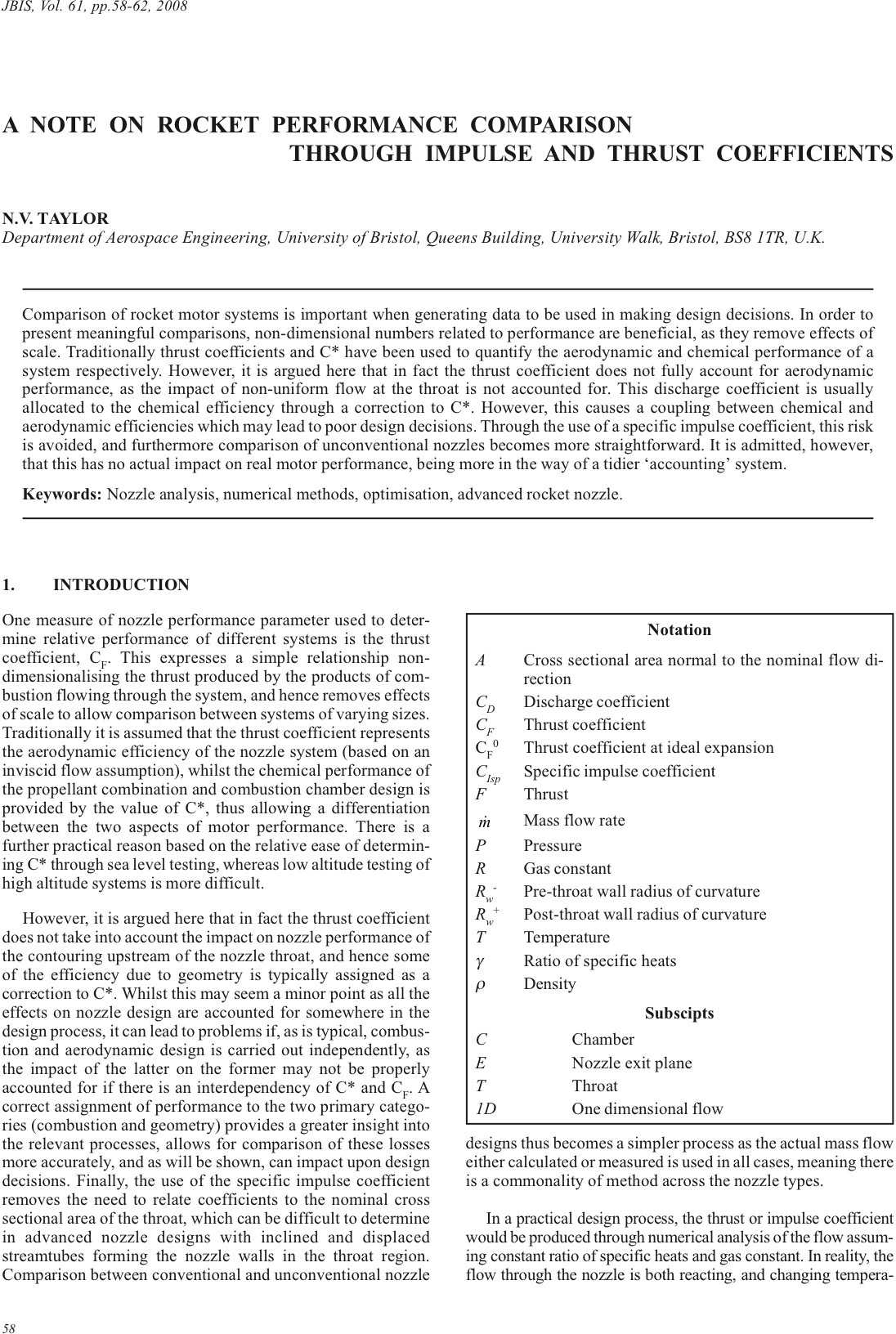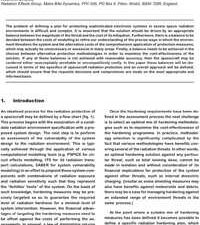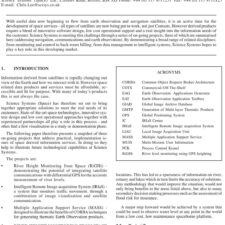A Note on Rocket Performance Comparison Through Impulse and Thrust Coefficients
£5.00
N.V. Taylor (2008), JBIS, 61, 58-62
Refcode: 2008.61.58
Keywords: Nozzle analysis, numerical methods, optimisation, advanced rocket nozzle.
Abstract:
Comparison of rocket motor systems is important when generating data to be used in making design decisions. In order to present meaningful comparisons, non-dimensional numbers related to performance are beneficial, as they remove effects of scale. Traditionally thrust coefficients and C* have been used to quantify the aerodynamic and chemical performance of a system respectively. However, it is argued here that in fact the thrust coefficient does not fully account for aerodynamic performance, as the impact of non-uniform flow at the throat is not accounted for. This discharge coefficient is usually allocated to the chemical efficiency through a correction to C*. However, this causes a coupling between chemical and aerodynamic efficiencies which may lead to poor design decisions. Through the use of a specific impulse coefficient, this risk is avoided, and furthermore comparison of unconventional nozzles becomes more straightforward. It is admitted, however, that this has no actual impact on real motor performance, being more in the way of a tidier `accounting’ system.





